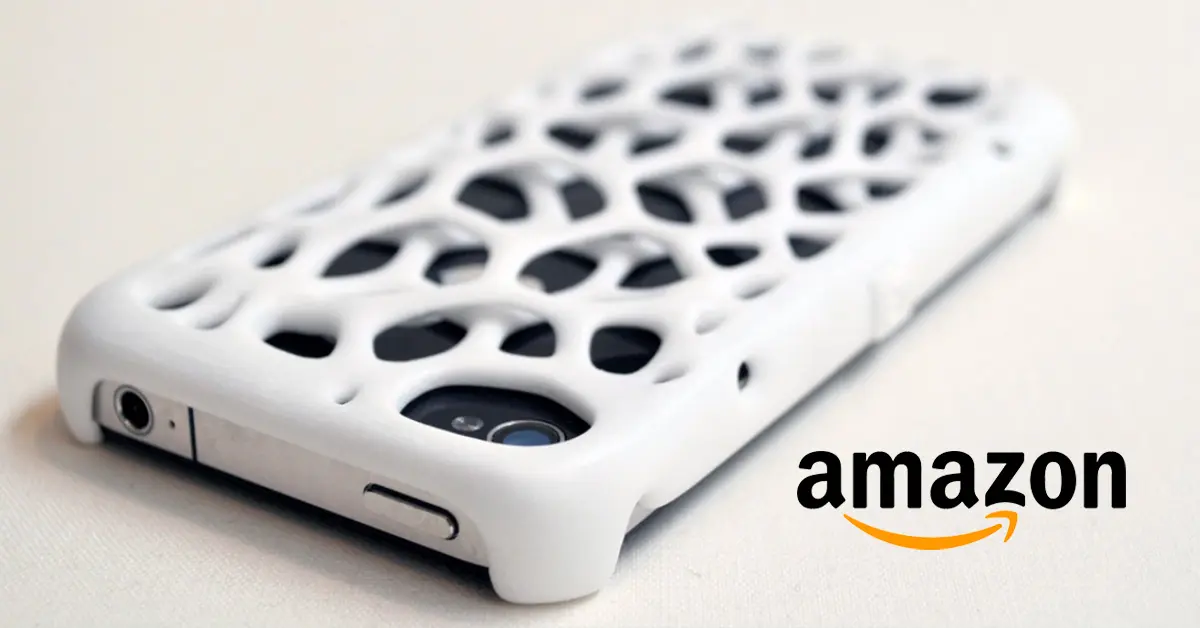Using 3D-printing technology for your Amazon business
Interested in trying out 3D printing? Why not take your newly 3D-printed products and sell them on Amazon?
Although 3D printing has been around for close to 40 years, it has become popular not so long ago. With affordable, at-home 3D-printing solutions, business owners can now print just about anything everything.
Nearly any item imaginable can be 3D printed: wedding rings, tools, toys and game pieces, home decor — even medical supplies.
Why should you 3D-print products to sell online?
- Lower upfront costs
Many sellers would say that the biggest drawback of the private-label business model is the upfront costs, which typically range from $1,000-2,500.
A lot of those costs are put towards purchasing bulk products — often at low costs from overseas suppliers.
For 3D-printing Amazon sellers, on the other hand, beyond spending the first $350-$500 to purchase a 3D printer and related supplies (more on this below), your products can be made to order. That is, you don’t have to spend a lot of money to invest in a bulk order of something without knowing it will sell.
Plus, if the operation doesn’t work out or you simply change your mind, you can sell your printer and recoup 50% or more of your startup costs.
- Less time spent finding/creating products
With a 3D printer, you don’t have to search for multiple products to sell online; you only need to list a handful. And once those products sell, you can print and fulfill the products to fit the order.
- Faster turnaround times
With 3D printing, you can print, pack, and ship the product in as little time as a single day.
While selling FBA can be similarly quick turnaround time, other business models take longer. For example, dropshipped products can take up to one month or longer to arrive in your customer’s mailbox, which isn’t an optimal customer experience.
How to get started with 3D printing: Costs & tools
3D printer: To 3D print, you’ll need a 3D printer! Before making your purchase, consider the following. After answering these questions for yourself, check out a full list of recommendations on all3Dp.com.
Are you printing just as a hobby? Or do you need a bigger surface area and faster machine to create professional products?
For professional needs, look for printers with large, heated printing beds (12-inch by 12-inch is preferred) and high build-quality. Starting out, the Creality CR-10 is recommended. You can purchase it on Amazon business for $399.
Cost: $250-$500
Filament: A 3D printer uses filament (its “ink”) to create the models. Filament is a thermoplastic that melts (rather than burns) when heated. For a full guide of the different types of filament available, and how they’re used, check out a full list of recommendations on all3Dp.com.
Cost: $20-30 per roll
Assorted tools: You may need or want to use tools like pallet knives, chemical sealant, and other items. You can read up on recommendations for accessories on windowscentral.com.
Cost: $10 or more
3D models or modeling software: Whether you create your own models (hard mode) or purchase designs from others, there will likely be an associated cost. For a full list of 3D modeling marketplaces and free repositories, check out all3Dp.com. And for software recommendations, all3Dp.com also has a list of those to look over.
Cost: Free to $150
A good computer: Experts recommend a computer with at least 4 GB of RAM and a strong processor capable of handling the software.
Cost: varies, but expect to pay $500-$800
How do I 3D-print models?
There are a few ways to source the models:
Create your own designs. Although it requires a little skill and a ton of practice, you might digitally sculpt your own designs for 3D printing. You can use 3D modeling software such as Blender or Zbrush.
Download existing designs. There are a ton of repositories and marketplaces for 3D models that you can download and print for free. Specifically look for those that are open license or that can be licensed by the original designer; you might even be able to find some in the public domain. Just note that you can’t sell products you print from copyrighted models. To sell, the model has to have an open license, or you must design it yourself.
Hire someone to create models based on your specifications. If you can’t quite find what you’re looking for or if you’d prefer something that others can’t duplicate and you don’t have the skill to make it yourself, hire a designer. You can find 3D modeling designers on freelance sites like Upwork and Fiverr.
Next, translate the model-to-machine instructions
This is done through another software program called a “slicer.” The slicer translates the model into G-code which creates the parameters the machine needs in order to print the 3D model.
Then, prepare the printer
There are two important steps required for preparation:
- Load the filament (the material from which the model will be made.)
- Level the bed. Make sure that the bed — the area where the printer’s nozzle deposits the filament — is correctly positioned to receive the filament.
Once everything is set up, print the model. The time it takes for a 3D printer to print the model depends on the printer you have and the complexity of your model. It can take anywhere from 30 minutes to a week or even longer.
Finally, post-process your designs
After your model is printed, you may need to remove supports, sand away mold lines, paint, polish, and smooth the design.
Source: JungleScout


